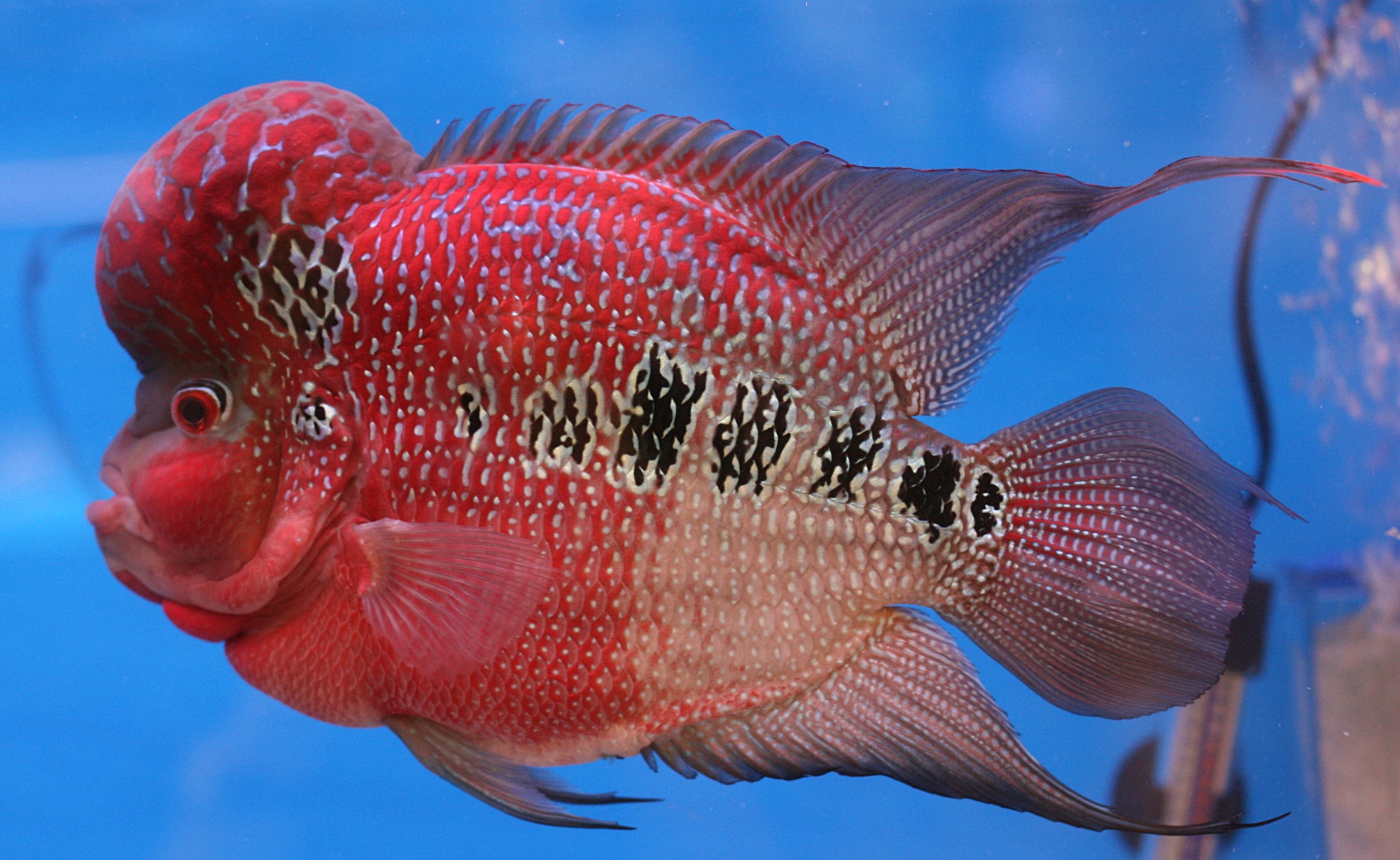- Flowerhorn
image_width = 240px
image_caption = a flowerhorn, a hybrid cichlid.
regnum =Animal ia
phylum =Chordata
classis =Actinopterygii
ordo =Perciformes
familia = Cichlidae
genus = Intergeneric hybrid The Flowerhorn, also called Luohan (Luo Han), is a intergenericcichlid hybrid. Flowerhorns are thought to arise from the man-made hybridization of a number ofcichlid species, from South andCentral America . Although the exact parent species are not known, it is most likely that they include "Cichlasoma trimaculatum " and "Amphilophus citrinellus " (or another fish of thered devil cichlid ) complex. Flowerhorns first emerged for sale on theaquarium market inMalaysia in the late 1990s and soon became popular in many countries in Asia. As a probable intergeneric hybrid the fish lacks a specificLatin name. Flowerhorns are, unlike many other hybrids, fertile.Other notable inclusions in the flowerhorns breeding are "
Cichlasoma festae " and "Vieja synspila " ('Redheaded' cichlid). Only the original breeders know exactly which species they crossbred to create the Flowerhorn cichlid. Given the vast amount of mixing, it is doubtful any recorded details of hybridisations exist.There is a belief in the
Far East that ownership of a Flowerhorn brings good fortune, especially inbusiness andgambling . The hump that the adult male fish develops is said to resemble the Chinese god of longevity, and it is believed that the owners luck will grow if the fish's hump grows. The adult males are thus the most commercially valuable. Flowerhorns have distinctive markings on their sides, which can be interpreted as recognisable symbols. It is also noteworthy that the original species from which these cichlids were hybridised also display a number of these traits.The market for Flowerhorns exhibited a classic "
boom and bust " cycle of thephenomenon , with rarity at the start and a huge oversupply at the end. The height of the outburst was in 2003, and was mainly in several countries inSoutheast Asia .Flowerhorns are hardy and very undemanding fish to keep in an aquarium. They do, however, require large
aquariums due to their large size - they can grow up to 16 inches (40 cm) long. They are aggressive andcarnivorous , and thus can only be kept with other large fish.Criticism
The sudden mania caused huge surplus stock, some of which was dumped in the wild, where they survived and caused havoc in the riverine
ecosystem s, such as inMalaysia . Flowerhorns are regarded negatively by many cichlid hobbyists in the West for a number of reasons. Firstly, they make identification of similar cichlids difficult, if not impossible. Secondly, flowerhorn cichlids have the potential to be accidentally bred with pure species lines. This has already occurred in a number of cichlids and other fishes commonly kept in the hobby. Lastly, flowerhorn's contribute to the demand for “new” and “different” fish that may lead to questionable practices such as breeding for deformed anatomical fish similarly to the current state of goldfish breeding.
Wikimedia Foundation. 2010.

